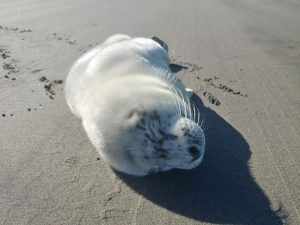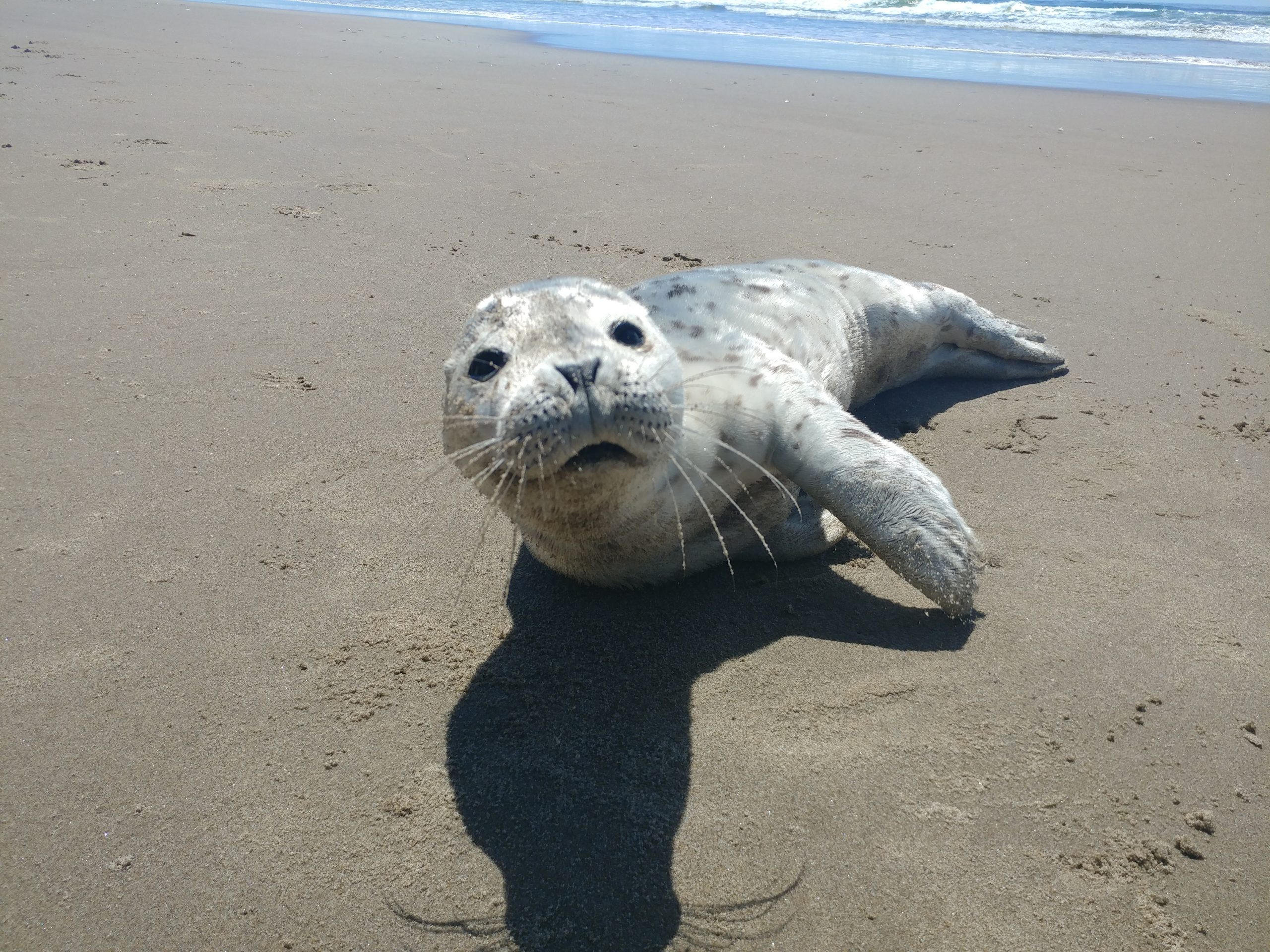From Tiffany Boothe, Seaside Aquarium/Marine Mammal Stranding Network
Spring is in the air and seal pups are about to start popping up along the Pacific Northwest coast.
Oregon and Washington typically see harbor seals born throughout spring and into late summer, while California may see pups early as February. These young animals use time on land to regulate body temperature and rest while their mothers hunt nearby. However, the mother may not return if humans are too close. Thus, wildlife experts suggest giving seal pups plenty of space, observe them from a distance and while they are absolutely adorable do not touch.
Female seals birth annually after an eleven-month gestation and utilize familiar coastal shores or estuary areas with easy access to water to have their pups. New seals can immediately swim but stay close and ride on their mothers back while they mature.
Baby seals often double in size from birth in 4-6 weeks on a regular diet of mother’s milk with 40% milk fat. While the extra layer of fat makes the pups adorable, the pups depend on that stored body fat to survive foraging on their own as they become more independent. Any interference from humans that could cause early separation between newborn pup and mother could be detrimental to the pup’s ability to survive.


The Marine Mammal Stranding Network responds to sightings of seal pups and other injured or dead marine mammals (including whales or dolphins). Responders will act as quickly as possible to assess the situation and obtain information and observations about the animal in question.
For the northern Oregon and southern Washington coast the Seaside Aquarium is the local responder for the Marine Mammal Stranding Network and can be contacted at 503.738.6211. If a stranded marine mammal is found elsewhere the Marine Mammal Hotline at 1.800.452.7888 and they will contact the appropriate stranding network responder for the area.


